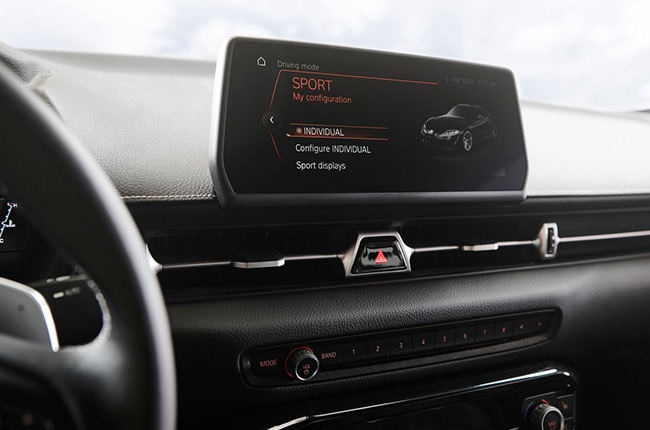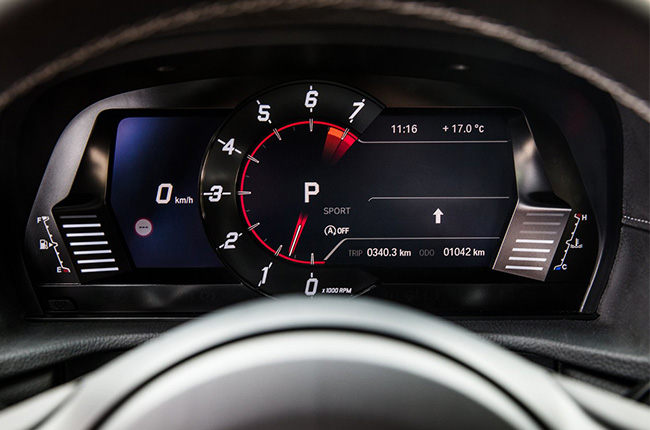
It’s the third to arrive in a series of legendary comebacks by Japanese brands. The first return happened with the Nissan GT-R, followed by the Acura NSX. Finally, we complete the trifecta with the Toyota GR Supra, the successor to one of the most influential nameplates in automotive history. It’s finally here, thanks to Toyota Motor Philippines, and the launch event only made us salivate at the thought of driving a car that is of this prestige to the Toyota brand.
The P4,990,000 price tag is enough to make us back down though, but knowing that the unit is a collaboration between Japan and Germany means that there are much precision and quality to be had in every detail. So let’s go over some of the more mundane details ranging from the nice to know, to the essential.
It has two hood latches

The Mark V Supra features two hood latches under its bonnet. A normal car will just have one that is centrally mounted. This is the second model that Toyota has ever had with two hood latches. The first-ever car to feature two hood latches is none other than the Mark V’s older brother, the JZA80 Mark IV Supra.
Chief Designer of the Supra, Tetsuya Tada, stated that the two hood latches were placed in the A80’s design by Isao Tsuzuki because the Supra was meant to go fast; Tsuzuki was also Tada’s mentor.
There is room for improvement

It’s not news that Toyota is pushing the potential of the Supra as a tuner’s car. The engine has the same number of cylinders as the venerable JZ-series of engines in the prior model. A turbocharged straight-six is still at the heart of this sports car. Since it has a turbo it comes prepared for all the performance mods that enthusiasts would like to inject into it.
The engine isn’t the only component that has potential, Toyota has also engineered attachment points for components that can improve the torsional rigidity of the chassis. It doesn’t stop there, the engineers and designers have incorporated many faux vents into the Supra for tuners to be able to improve cooling once the engine gets modified or aerodynamics for stability.
Engineers implore that people improve the cooling system of the engine and transmission.
Forged wheels, adaptive suspension, and big brake calipers

The GR Supra rolls on a special set of aluminum wheels that give the car better performance over a cast set. Forging is an expensive manufacturing method that requires intense heat and pressure in order to produce one wheel. Similar to how diamonds are formed in the crust of the earth, a large machine presses a billet of aluminum to create a super dense material that is lighter and more durable than a wheel of the same size and design.
Forged wheels make sure that the amount of unsprung weight is kept to a minimum, giving better fuel economy. This helps because the engine doesn’t have to work as hard to drive the wheels of the car.
In a MacPherson front and Multi-link rear layout, adaptive suspension varies the tuning on the fly depending on the drive mode and situation, while a set of four-piston brake calipers up front ensure a high level of stopping power at the press of the pedal.
It’s not all about numbers

Even if the Supra is advertised to make just 335 hp, the car still manages to get from 0-100 kph in 4.1 seconds. The designers state that it is not about horsepower and boost like back in the day. The Supra doesn’t run a low-compression turbo setup. Instead, it is engineered to have a balance of response and power.
Boost should kick in as early as possible. Engineers state that the twin-scroll turbo spools so efficiently that it is already at peak boost at 1,500 RPM. Things may be different once you sit in the driver’s seat of the car.
It’s a BMW, but not in spirit
While it does share a lot of the parts from the German manufacturer, the Z4 was developed at the same time and used as a template for Toyota engineers to toy around with. While it is indeed German in its metal, the design process that has gone into the model is Japanese in essence.
The BMW team was not in direct contact with the Toyota team with regards to the developments made to the models, while there was much testing that happened to the components such as the engine. Toyota reliability was always a part of the mix, hence extensive testing by the Japanese was never left out of the equation.
Though, what does make a car these days? Origins aside, the point is that Toyota has chosen to go with BMW, and however disappointing or impressive, best to wait and see how great this platform will be in the future. Purists may scoff, but this is what Toyota has to offer to its fans.
We cannot deny how German the interior is, from the dashboard all the way down the BMW i-Drive infotainment system and shifter.
Four cylinders?

While it isn’t a crazy idea to make the model more affordable in the Philippines, historically the Supra had entry-level models. In the case of the A80, the 2JZ was also available as a naturally aspirated motor. Absent were the twin-turbochargers that were present in the 2JZ-GTE variants of the day.
So, it does make sense that there will be a turbocharged four-cylinder on offer. In the case of the Philippines, however, there is no announcement yet for a turbo-four variant.
Latest Features
-
The 6 things every Ford Ranger must pass before it leaves the factory / Featured Article
Every Ford Ranger, from the base model to the Ranger Raptor, goes through a full inspection process before it leaves the factory. This includes six steps that make sure it’s ready to drive a...
-
Which GAC AION EV is best for your everyday lifestyle? / Featured Article
The GAC AION lineup has something for everyone, maybe you're after space, speed, or just a smooth city drive. Here's a quick breakdown of which model might work best for your day-to-day life...
-
The AutoDeal Awards 2024: Celebrating excellence in the auto Industry / Featured Article
The AutoDeal Awards 2024: Celebrating excellence in the auto Industry
Popular Articles
-
Cheapest cars under P700,000 in the Philippines
Jerome Tresvalles · Sep 02, 2024
-
First car or next car, the Ford EcoSport is a tough package to beat
Jun 18, 2021
-
Car Maintenance checklist and guide – here’s everything you need to know
Earl Lee · Jan 12, 2021
-
Most fuel efficient family cars in the Philippines
Bryan Aaron Rivera · Nov 27, 2020
-
2021 Geely Okavango — Everything you need to know
Joey Deriquito · Nov 19, 2020
-
Family cars in the Philippines with the biggest trunks
Sep 20, 2023
-
Head to head: Toyota Rush vs. Suzuki XL7
Joey Deriquito · Oct 28, 2020
-
Why oil changes are important for your car
Earl Lee · Nov 10, 2020
-
2021 Kia Stonic — What you need to know about it
Joey Deriquito · Oct 16, 2020
-
Top 7 tips for buying a used car in the Philippines
Joey Deriquito · Nov 26, 2020







